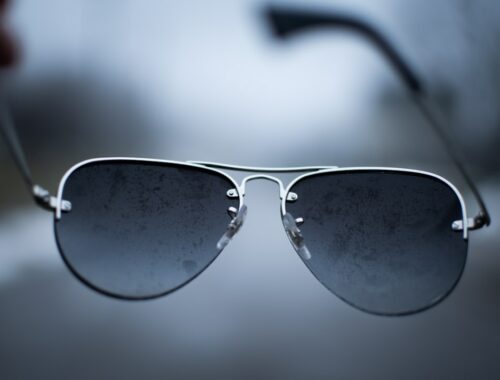
Enhance Your Vision with Polarized Lenses
Polarized lenses are a specialized type of sunglass lens designed to reduce glare from reflective surfaces like water, snow, and glass. They function through a process called polarization, which utilizes a specific filter to block horizontal light waves while permitting vertical light waves to pass through. When light reflects off a flat surface, it becomes polarized, with light waves aligning horizontally and creating intense glare.
Polarized lenses effectively reduce this glare by selectively blocking these horizontal light waves, thereby improving visibility. The scientific principle behind polarized lenses is rooted in the behavior of light waves as they interact with various surfaces. When light waves strike a flat surface, such as a body of water or a snowy slope, they become polarized, resulting in a blinding glare.
This glare can be both uncomfortable and potentially hazardous, particularly during outdoor activities like driving, fishing, or skiing. Polarized lenses are engineered to counteract this effect by selectively filtering out horizontal light waves, thus diminishing glare and providing clearer vision. This technology is founded on fundamental principles of physics and optics and has gained widespread acceptance for its ability to enhance visual comfort and safety in diverse outdoor environments.
Key Takeaways
- Polarized lenses work by reducing glare and blocking horizontal light waves, which can improve visibility and reduce eye strain.
- Using polarized lenses can enhance visual clarity, color perception, and depth perception, making them ideal for outdoor activities such as driving, fishing, and skiing.
- Polarized lenses can improve outdoor activities by reducing glare from water, snow, and roads, enhancing safety and performance.
- When choosing polarized lenses, consider factors such as lens material, color, and polarization efficiency to ensure they meet your specific needs and preferences.
- To care for polarized lenses, use a microfiber cloth to clean them, avoid using harsh chemicals, and store them in a protective case when not in use to prevent scratches and damage.
- Common misconceptions about polarized lenses include the belief that they reduce visibility in low light conditions and that they provide UV protection (which is actually a separate feature).
- The future of polarized lens technology may involve advancements in materials, coatings, and designs to further improve performance and durability.
Benefits of Using Polarized Lenses
Reduced Glare and Improved Visibility
One of the primary advantages of polarized lenses is their ability to reduce glare from reflective surfaces, such as water, snow, and roads. This can significantly improve visibility and reduce eye strain, especially in bright sunlight or high-glare environments.
Enhanced Visual Comfort and Clarity
By minimizing glare, polarized lenses can enhance visual comfort and clarity, allowing individuals to see more clearly and react more quickly to their surroundings. In addition to reducing glare, polarized lenses can also enhance color perception and contrast, making objects appear sharper and more defined.
Benefits for Specific Activities
This can be particularly beneficial for activities such as fishing, where the ability to see beneath the water’s surface is crucial. By cutting through the glare and enhancing contrast, polarized lenses can help anglers spot fish and underwater structures more easily.
Added Protection from UV Rays
Furthermore, polarized lenses can provide UV protection, shielding the eyes from harmful ultraviolet rays that can cause long-term damage. This added layer of protection makes polarized lenses an excellent choice for outdoor activities where sun exposure is a concern.
How Polarized Lenses Can Improve Outdoor Activities

Polarized lenses can greatly improve outdoor activities by enhancing visual clarity, reducing glare, and providing UV protection. Whether you’re fishing, skiing, golfing, or simply enjoying a day at the beach, polarized lenses can make a significant difference in your overall experience. For fishermen, polarized lenses can help cut through the surface glare of the water, allowing them to see beneath the surface and spot fish more easily.
This can be especially advantageous when fishing in shallow or clear waters where visibility is key to success. Similarly, for skiers and snowboarders, polarized lenses can help improve visibility on the slopes by reducing glare from the snow. This can make it easier to navigate varied terrain and spot potential hazards such as ice patches or changes in elevation.
Golfers can also benefit from polarized lenses, as they can enhance contrast and depth perception on the green, making it easier to read the contours of the course and judge distances accurately. Even for casual outdoor activities such as hiking or picnicking, polarized lenses can provide added comfort and protection from the sun’s harmful rays.
Choosing the Right Polarized Lenses for Your Needs
| Lens Type | Usage | Benefits |
|---|---|---|
| Gray | General outdoor activities | Reduces brightness without distorting colors |
| Brown | Driving and water activities | Enhances contrast and depth perception |
| Yellow/Amber | Low light conditions | Improves visibility in overcast or foggy conditions |
When choosing polarized lenses, it’s important to consider your specific needs and preferences to ensure you select the right pair for your lifestyle. One of the key factors to consider is the lens color, as different colors can affect how you perceive light and contrast. Gray lenses are a popular choice for general outdoor use as they provide true color perception and reduce brightness without altering contrast.
Brown lenses are ideal for enhancing contrast and depth perception, making them well-suited for activities such as fishing or golfing. Another important consideration is the lens material, as this can impact factors such as durability, weight, and optical clarity. Polycarbonate lenses are lightweight and impact-resistant, making them a great choice for sports and outdoor activities where durability is essential.
Glass lenses offer superior optical clarity but are heavier and more prone to shattering, making them better suited for less active pursuits. Additionally, it’s important to consider the frame style and fit to ensure comfort and proper coverage for your eyes.
Tips for Caring for Polarized Lenses
To prolong the life of your polarized lenses and maintain their effectiveness, it’s important to follow proper care guidelines. One of the most important tips for caring for polarized lenses is to clean them regularly with a microfiber cloth and lens cleaner specifically designed for eyewear. Avoid using harsh chemicals or abrasive materials that could scratch or damage the lenses.
When not in use, store your polarized sunglasses in a protective case to prevent scratches and breakage. Additionally, be mindful of how you handle your polarized lenses to avoid bending or misaligning them. Always use both hands when putting on or removing your sunglasses to ensure even pressure on the frame.
Avoid leaving your sunglasses in extreme temperatures or direct sunlight for prolonged periods, as this can cause warping or damage to the lenses. By following these simple care tips, you can help preserve the quality and effectiveness of your polarized lenses for years to come.
Common Misconceptions About Polarized Lenses

Myth: Polarized Lenses Only Work in Bright Sunlight
One common misconception is that polarized lenses are only beneficial in bright sunlight or high-glare conditions. While it’s true that polarized lenses excel in these environments, they can also provide benefits in overcast or hazy conditions by reducing glare and enhancing contrast.
Myth: Polarized Lenses Block Out All Light
Another misconception is that polarized lenses completely block out all light, making them unsuitable for low-light conditions. In reality, polarized lenses selectively filter out horizontal light waves to reduce glare while still allowing vertical light waves to pass through.
The Truth About Polarized Lenses
This means that polarized lenses can be worn in a variety of lighting conditions without compromising visibility. By understanding how polarized lenses work, you can enjoy the benefits of reduced glare and enhanced contrast in any situation.
The Future of Polarized Lens Technology
As technology continues to advance, so too does the potential for innovation in polarized lens technology. One area of development is in the use of advanced coatings and materials to further enhance the performance of polarized lenses. New coatings may offer improved scratch resistance, water repellency, and smudge resistance, making polarized lenses even more durable and easy to maintain.
Another area of advancement is in the development of customizable polarized lenses that can be tailored to individual preferences and activities. By allowing users to select specific tints, coatings, and other features, customizable polarized lenses could provide a personalized solution for optimal visual comfort and performance. Furthermore, ongoing research into new materials and manufacturing processes may lead to lighter weight and more eco-friendly options for polarized lenses.
By incorporating sustainable materials and production methods, future polarized lenses could offer enhanced performance while minimizing environmental impact. In conclusion, polarized lenses offer numerous benefits for outdoor activities by reducing glare, enhancing visual clarity, and providing UV protection. By understanding the science behind polarized lenses and considering factors such as lens color and material when choosing a pair, individuals can select the right option for their specific needs.
With proper care and maintenance, polarized lenses can provide long-lasting performance and comfort. As technology continues to evolve, the future of polarized lens technology holds promise for even greater advancements in performance and customization options.
Du vil muligvis også synes om

Stor stil med oversize solbriller
28. februar 2024
Børnesolbriller: Vigtigheden du undervurderer
13. september 2025

